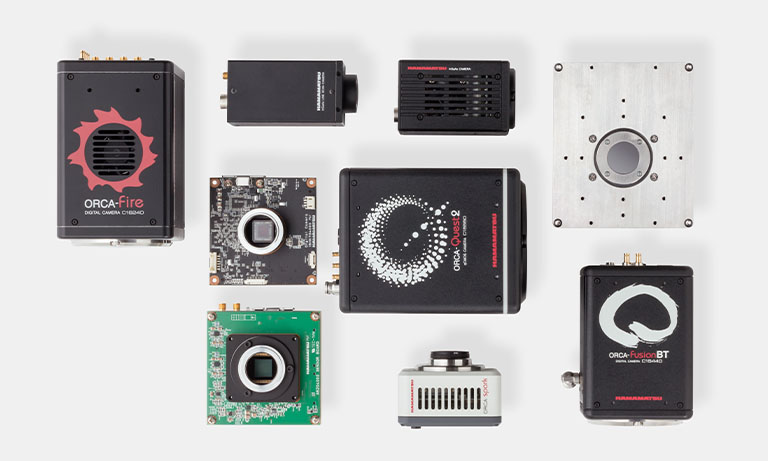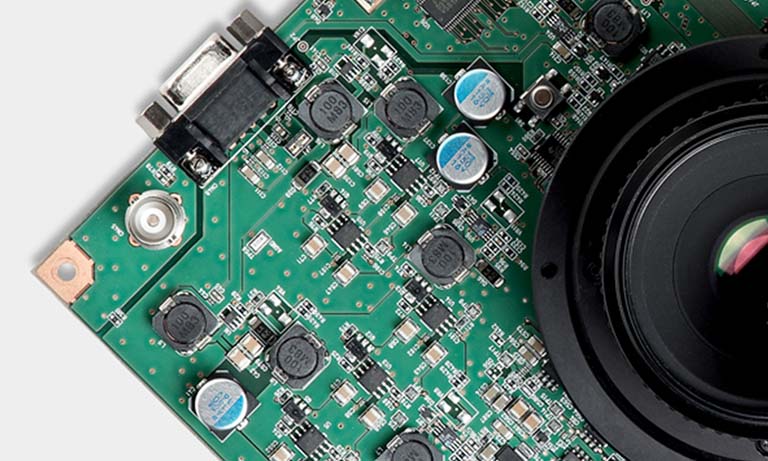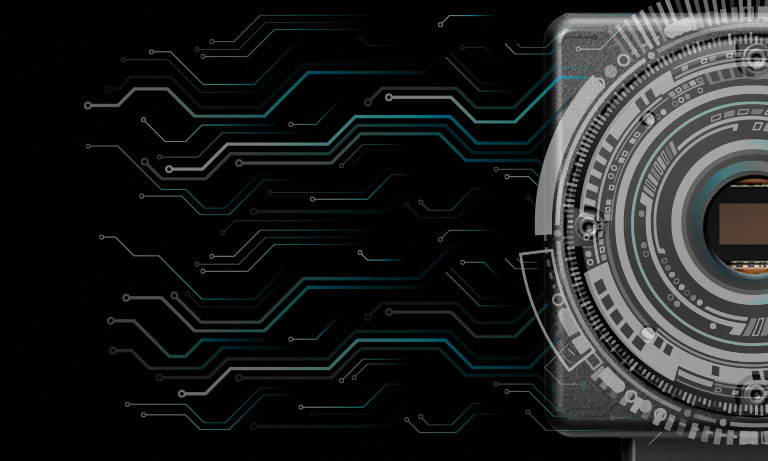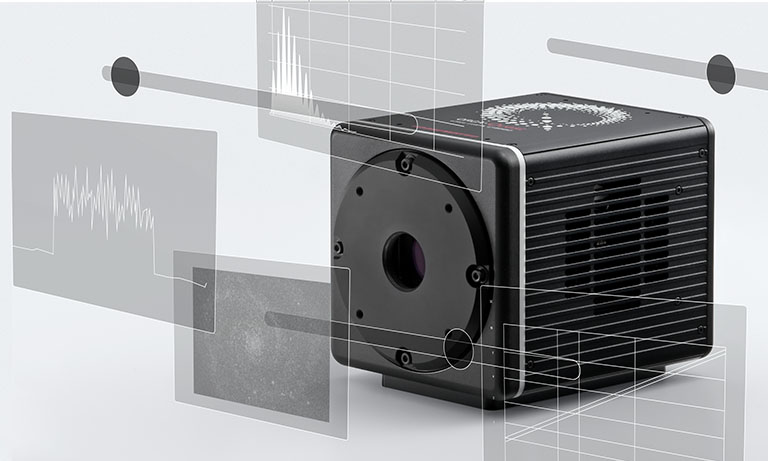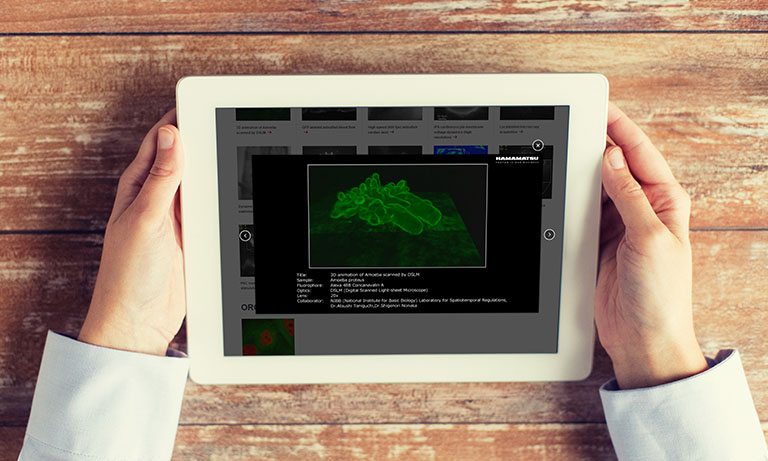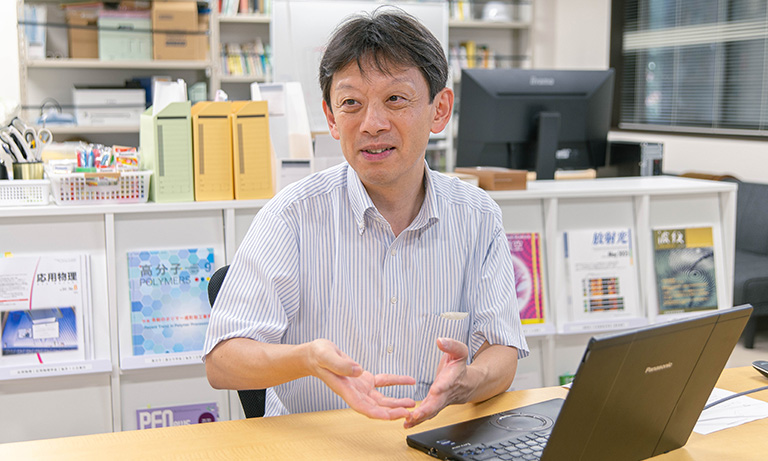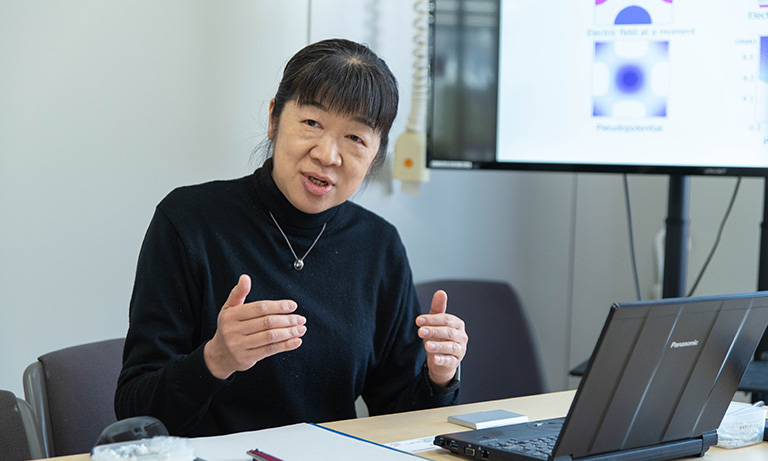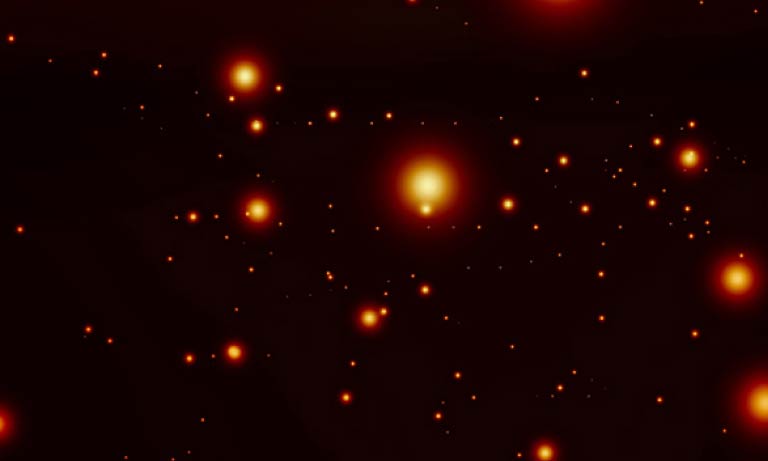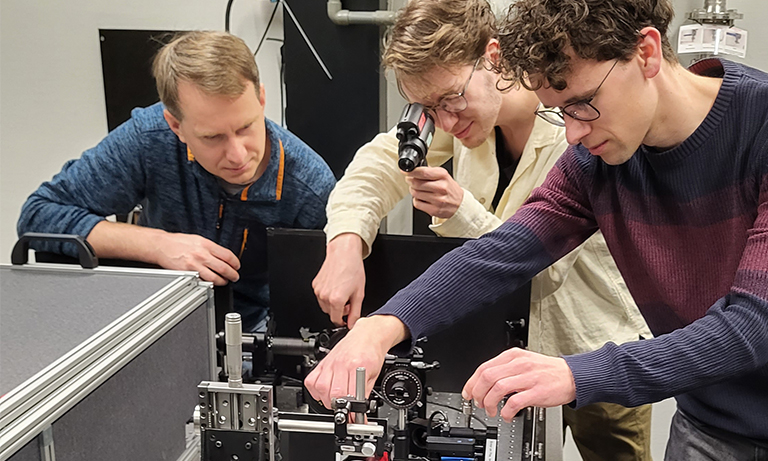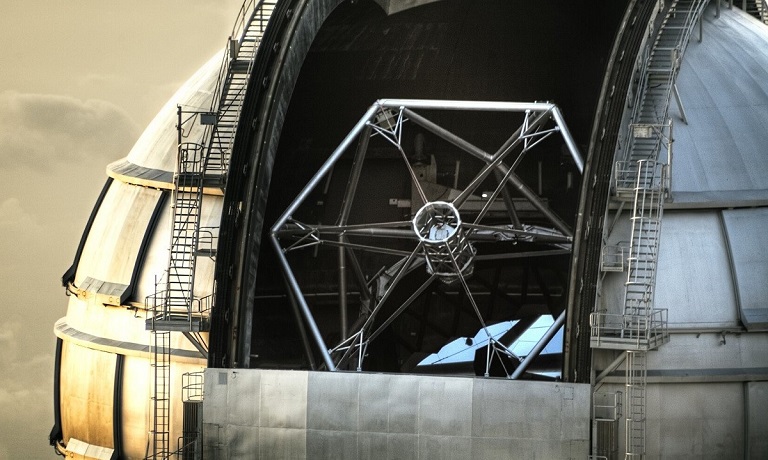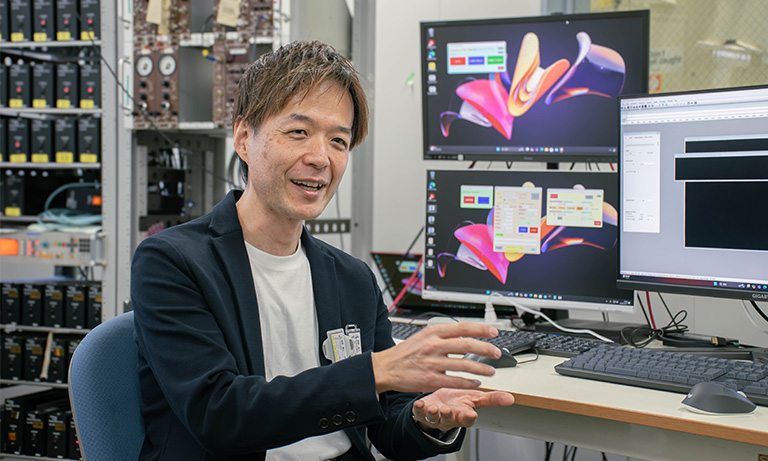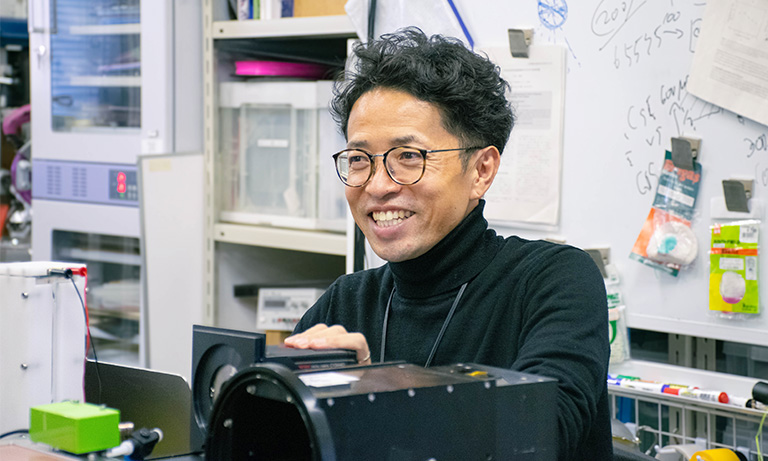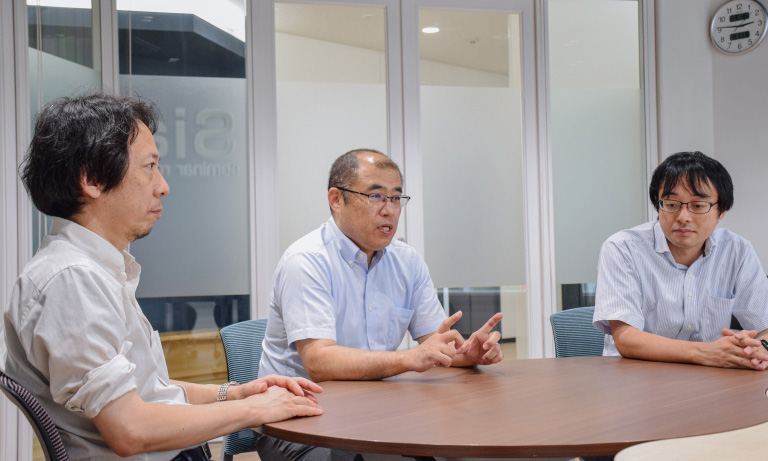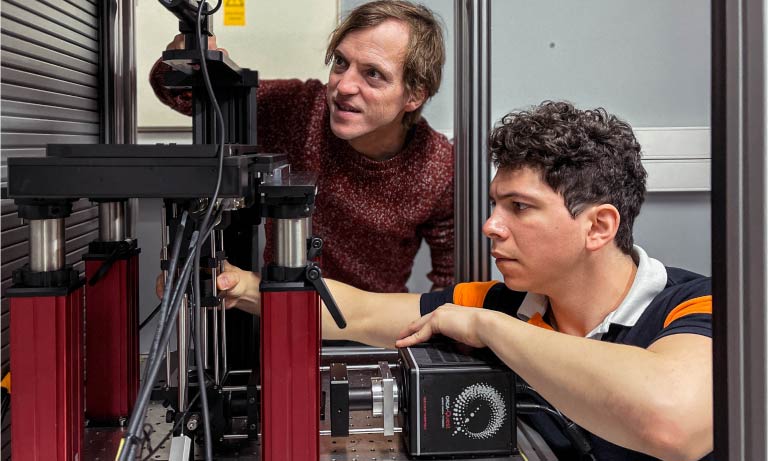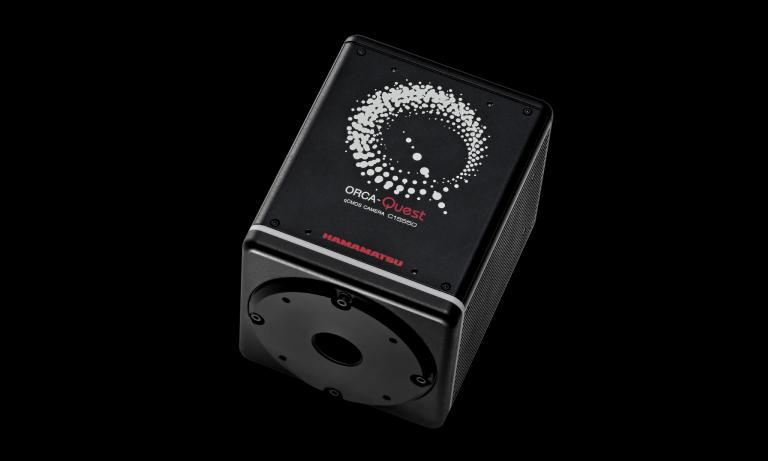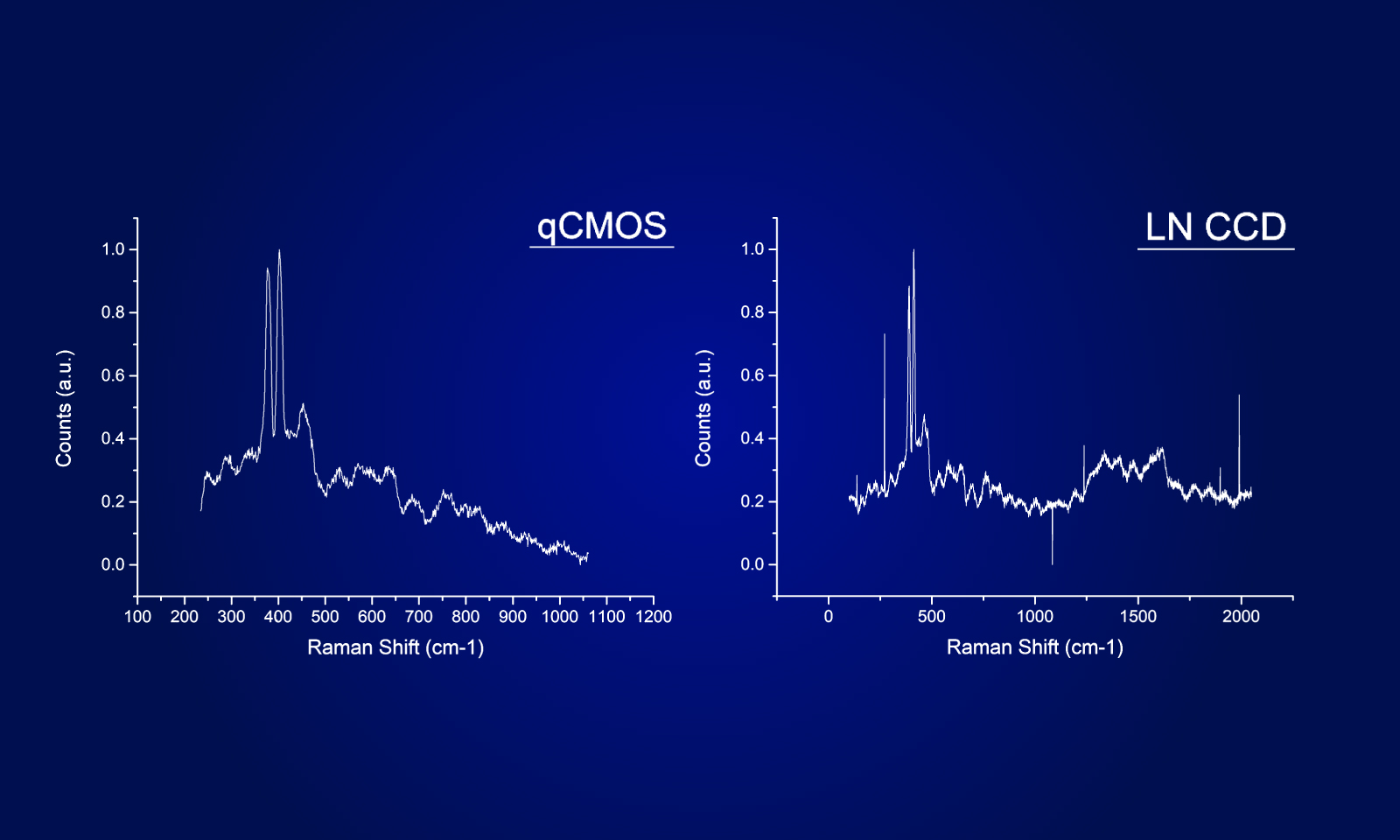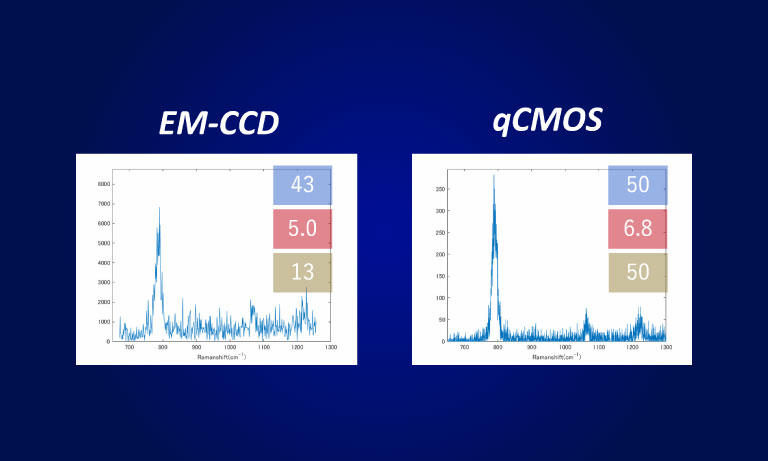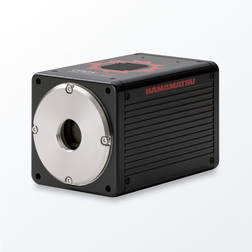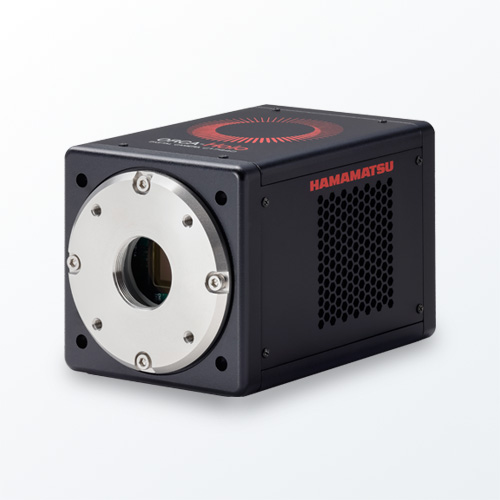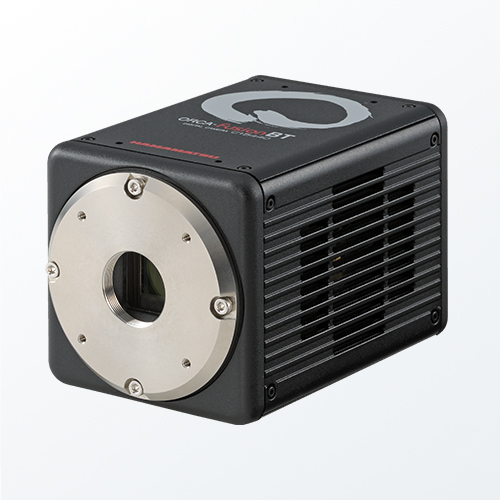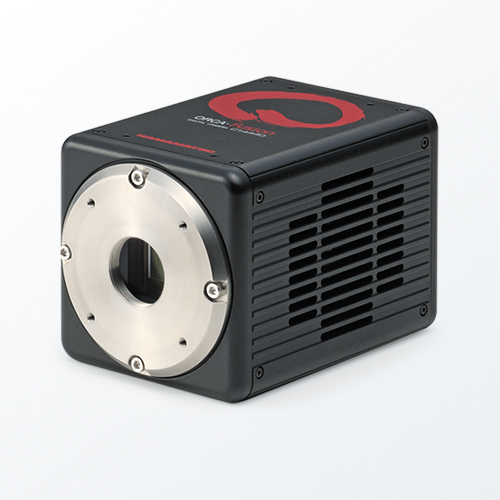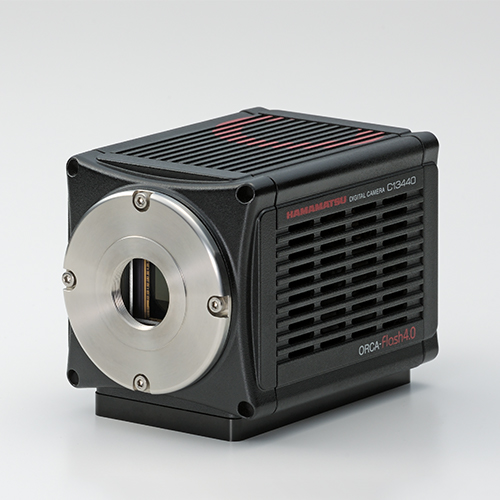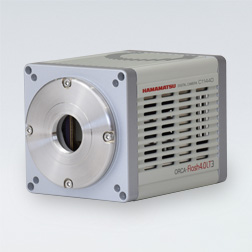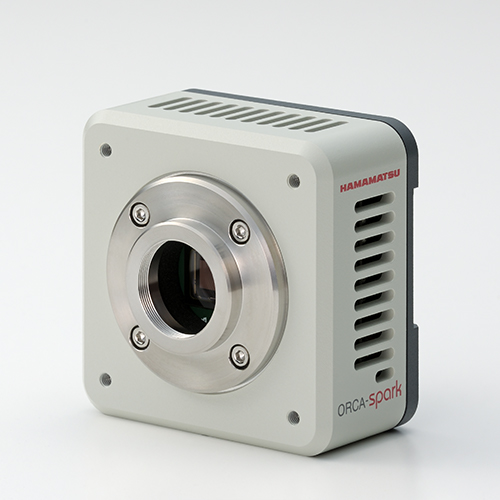United Kingdom (EN)
Select your region or country.
ORCA-Fire Digital CMOS camera
C16240-20UP
Elemental for Discovery
The ORCA®-Fire intelligently integrates all the essential elements of a high performance, back-thinned, scientific CMOS (sCMOS) camera. The camera’s excellence is rooted in Hamamatsu’s dedication to low noise and high quantum efficiency sCMOS technology. With the ORCA-Fire, high sensitivity is realized while also achieving excellent resolution and blazing fast speeds. The ORCA-Fire shines when the science demands high throughput but the sample can only deliver a few photons.
Will the ORCA-Fire spark your next discovery?
ORCA is a registered trademark of Hamamatsu Photonics K.K. (China, EU, France, Germany, Japan, UK, USA).
Highlight Specs
LOW NOISE
1.0 electrons rms (115 frames/s)
HIGH QE
86 % @460 nm (Back illuminated CMOS)
HIGH RESOLUTION
4432 (H) × 2368 (V) (Pixel size 4.6 μm)
HIGH SPEED
115 frames/s (@4432(H)×2368(V) 10.5 Mpixels)
LARGE FIELD OF VIEW
20.4 mm × 10.9 mm (Diagonal 23.114 mm)
HIGH DYNAMIC RANGE
1 : 20 000 (Full well capacity 20 000 electrons)
SMALL PIXELS, BIG RESOLUTION
Optimize your optics to maximize resolution
Low mag imaging (<40×) offers the advantage of large field of view, which can be critical for high throughput applications. To acquire low mag images with maximum information, the imaging system must achieve high resolution by matching pixel size to Nyquist-level or higher sampling rates. The pixel size of the ORCA-Fire is ideal for most 40× objectives or lower (see chart below). The ORCA-Fire’s high spatial resolution combined with a large pixel array and high speed readout delivers 2.9× higher pixel throughput over even the fastest 4.2 MP 6.5 μm sCMOS camera.
Example of appropriate pixel size of sensor according to objective lens magnification and NA
| Magnification | NA | δ (μm) | Δ (μm) | Appropriate pixel size (μm) |
|---|---|---|---|---|
| 4 | 0.16 | 2.10 | 8.4 | 4.2 |
| 10 | 0.4 | 0.84 | 8.4 | 4.2 |
| 20 | 0.8 | 0.42 | 8.4 | 4.2 |
| 40 | 1.4 | 0.24 | 9.6 | 4.8 |
| 40 | 0.95 | 0.35 | 14.1 | 7.1 |
| 60 | 1.42 | 0.24 | 14.2 | 7.1 |
| 100 | 1.5 | 0.22 | 22.4 | 11.2 |
* Rayleigh criterion (δ) = 0.61λ / NA
* Wavelength (λ) = 550 nm
* Δ = δ × Magnification of objective lens
Comparison of image quality at different pixel sizes
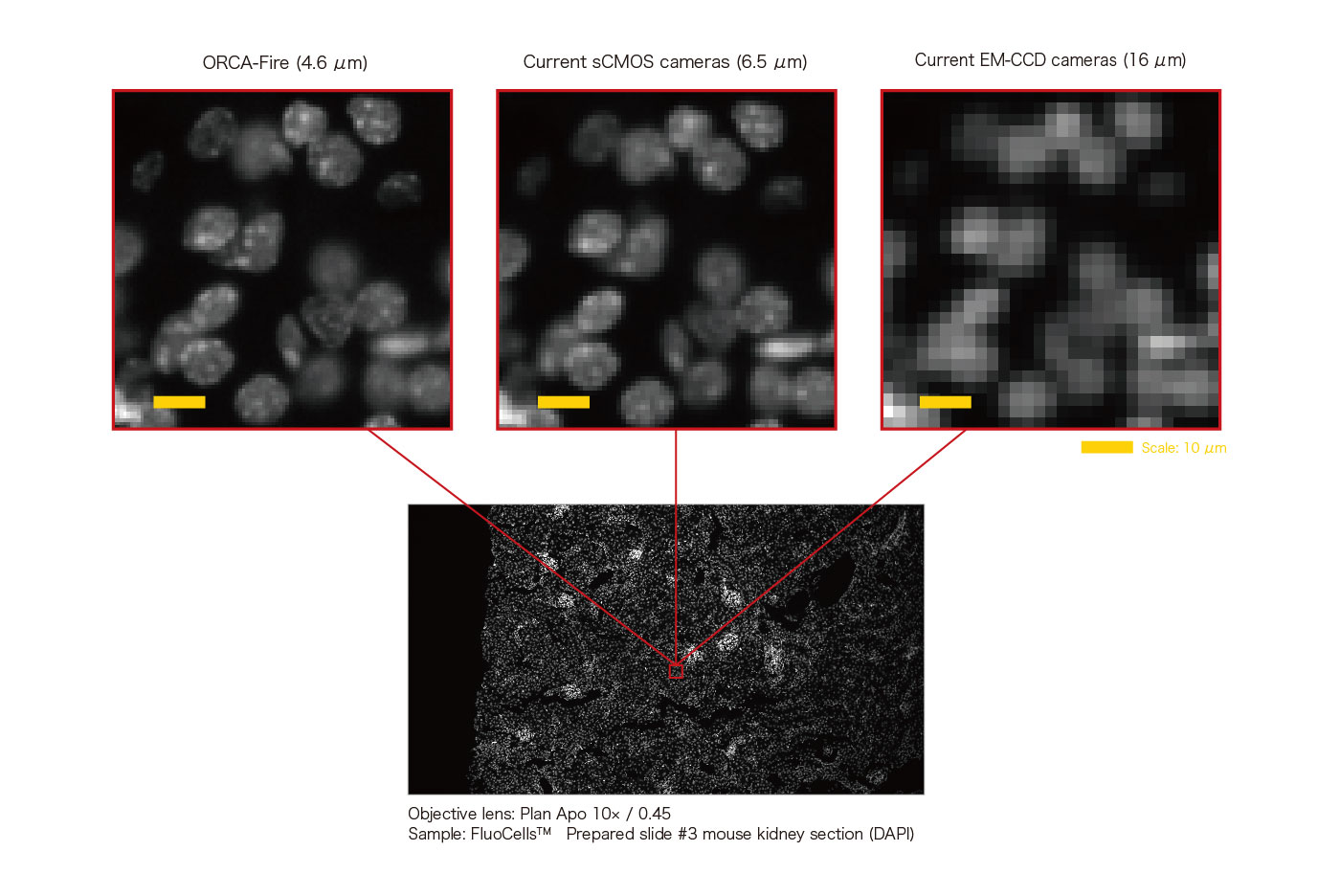
HIGH QE & LOW NOISE
Realize high sensitivity without sacrifice
The ORCA-Fire uses advanced back-thinned technology with micro-lenses to achieve high quantum efficiency. Combined with readout noise of 1.0 e- rms, the ORCA-Fire continues Hamamatsu's trend of providing sCMOS cameras that offer paramount sensitivity at all light levels.
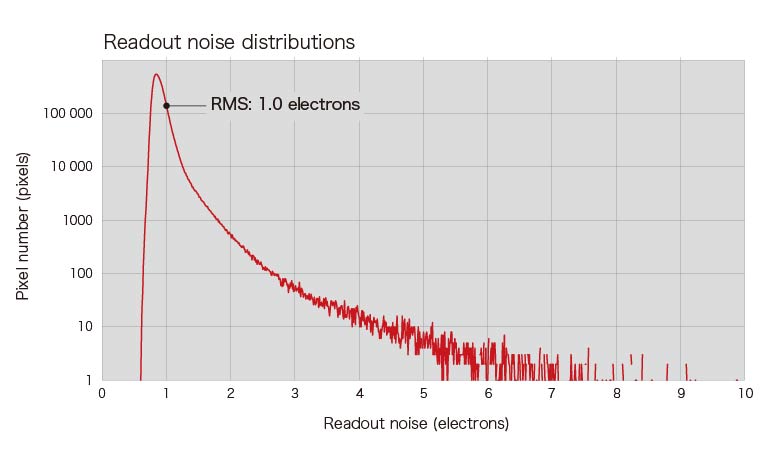
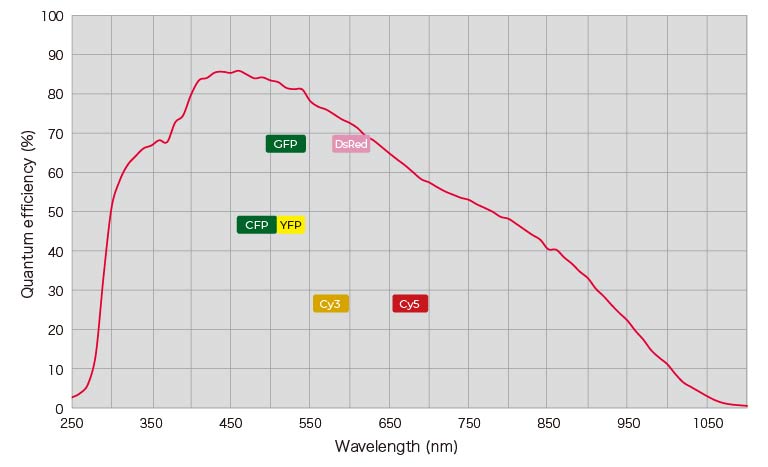
Deep trench structure and backthinning
High QE is a fundamental expectation and a critical component of high sensitivity imaging. Achieving high QE through sensor backthinning seems straightforward however there are nuances in backthinned sensor design that can impact image quality. In conventional back-illuminated detectors, crosstalk occurs between pixels due to poor pixel separation within the active region of the silicon, impairing resolution independent of pixel size. Our engineers implemented a deep trench pixel structure in the ORCA-Fire that prevents pixel crosstalk and improves resolution.
What is a trench structure?
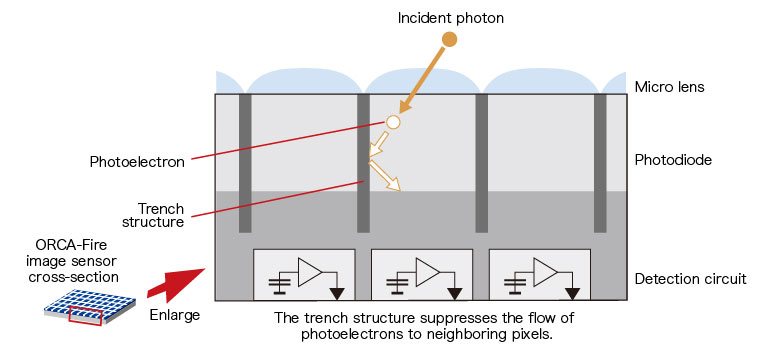
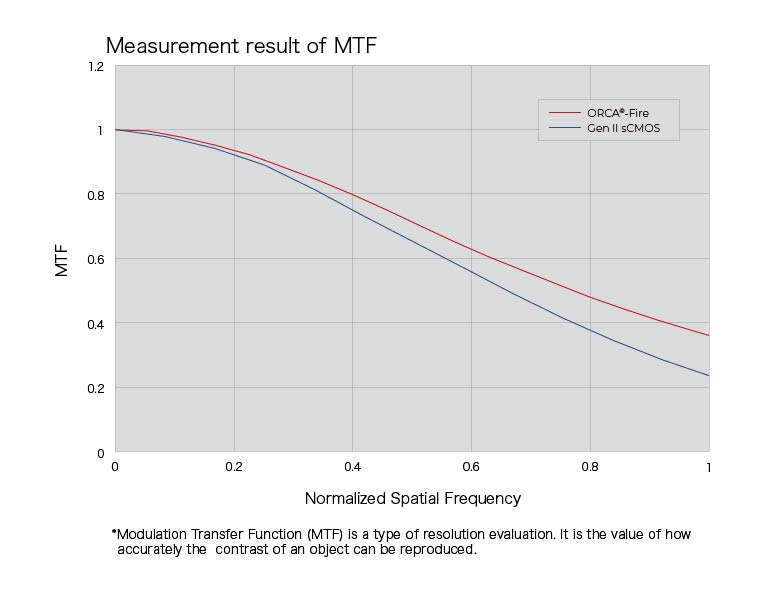
SELECT YOUR SPEED
Every ORCA-Fire has CoaXPress and USB connectivity
Readout speed (frames/s)
| Readout Mode | Area Readout Mode | |||
|---|---|---|---|---|
| Scan Mode | Standard scan | |||
| X(pixels) | Y(pixels) | CoaXPress | USB3.1 Gen I (16 bit) |
USB3.1 Gen I (8 bit) |
| 4432 | 2368 | 115 | 15.7 | 31.5 |
| 4432 | 2304 | 118 | 16.2 | 32.4 |
| 4432 | 2048 | 132 | 18.2 | 36.5 |
| 4432 | 1024 | 264 | 36.4 | 72.8 |
| 4432 | 512 | 524 | 72.3 | 144 |
| 4432 | 256 | 1020 | 143 | 286 |
| 4432 | 128 | 1980 | 279 | 558 |
| 4432 | 8 | 15 200 | 2360 | 5260 |
| 4432 | 4 | 19 500 | 3960 | 7200 |
Readout speed (frames/s) at 2×2 binning
| Readout Mode | Area Readout Mode | |||
|---|---|---|---|---|
| Scan Mode | Standard scan | |||
| X(pixels) | Y(pixels) | CoaXPress | USB3.1 Gen I (16 bit) |
USB3.1 Gen I (8 bit) |
| 2216 | 1184 | 115 | 63.1 | 115 |
| 2216 | 1152 | 118 | 64.9 | 118 |
| 2216 | 1024 | 132 | 73 | 132 |
| 2216 | 512 | 264 | 145 | 264 |
| 2216 | 256 | 524 | 289 | 524 |
| 2216 | 128 | 1020 | 572 | 1020 |
| 2216 | 64 | 1980 | 1110 | 1980 |
| 2216 | 4 | 15 200 | 10 500 | 15 200 |
| 2216 | 2 | 19 500 | 13 600 | 19 500 |
Mega pixels per second
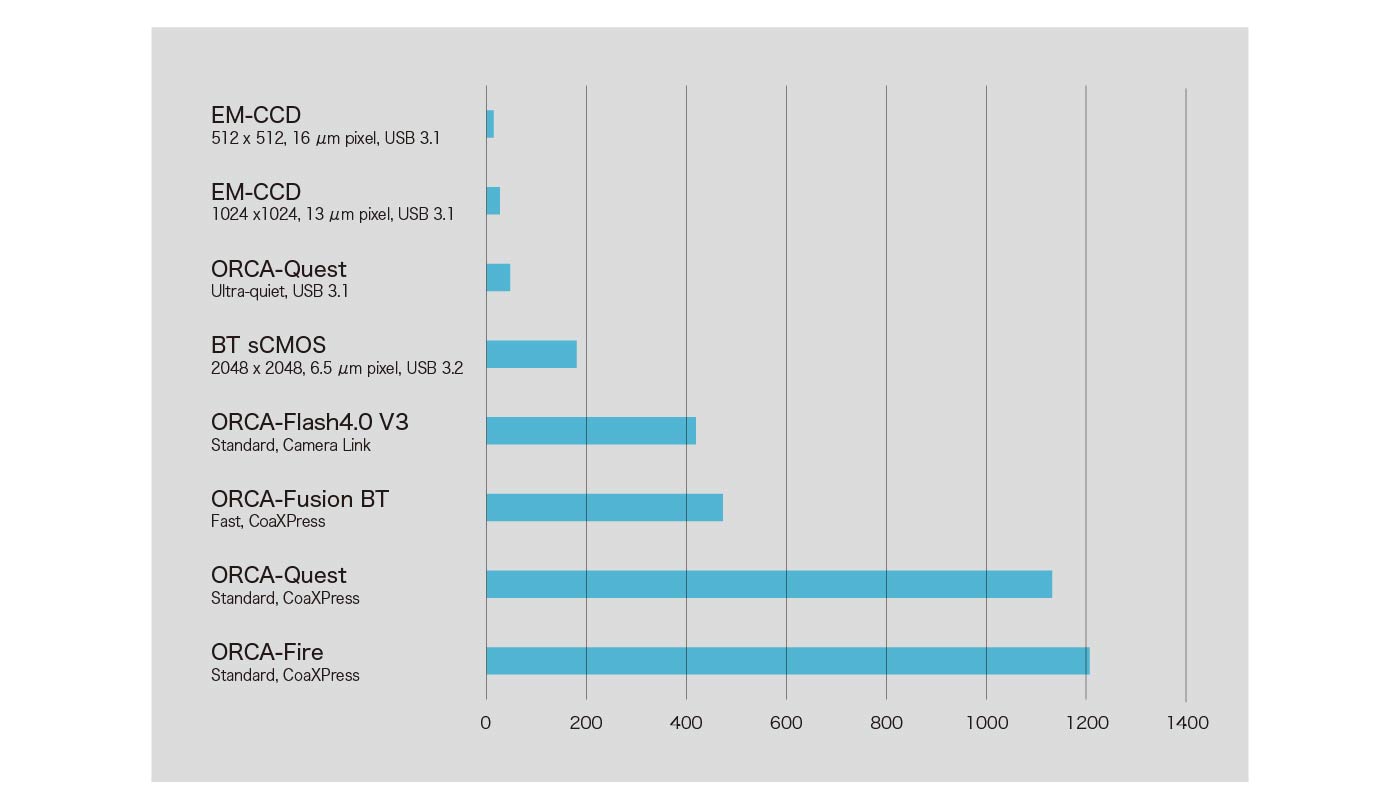
EXPAND YOUR VISION
Field of view comparison
With 4432 (H) × 2368 (V) pixels, the ORCA-Fire can effectively utilize a 22 mm microscope field of view.
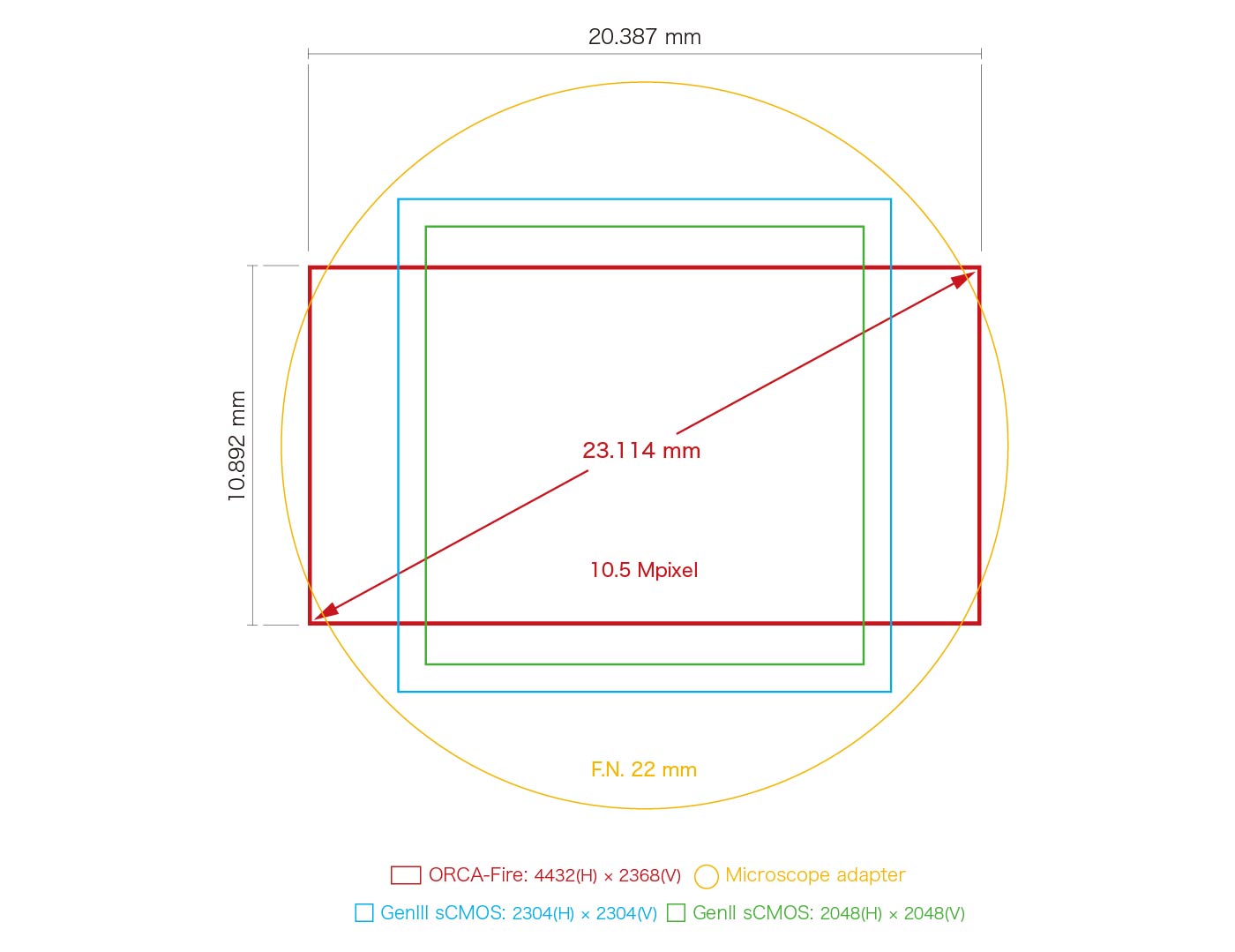
Lightsheet : SPECIALIZED FOR THE SPECIALIST
Lightsheet readout mode reduces scattered light effects
Researchers are increasingly turning to fluorescence lightsheet microscopy to study biological processes in living cells and organisms and to capture stunning 3D resolution of cleared tissue. There are many flavors of lightsheet microscopy but generally the sample is illuminated orthogonally using a “sheet” of light. This sheet is then scanned across the sample to obtain optical cross-sectional images that can be reassembled into full 3D renderings. The ORCA-Fire implements Hamamatsu’s patented lightsheet readout mode. In this mode, the lightsheet is synchronized with readout of the sensor, reducing the impact of scattered light and effectively improving image quality and signal to noise.
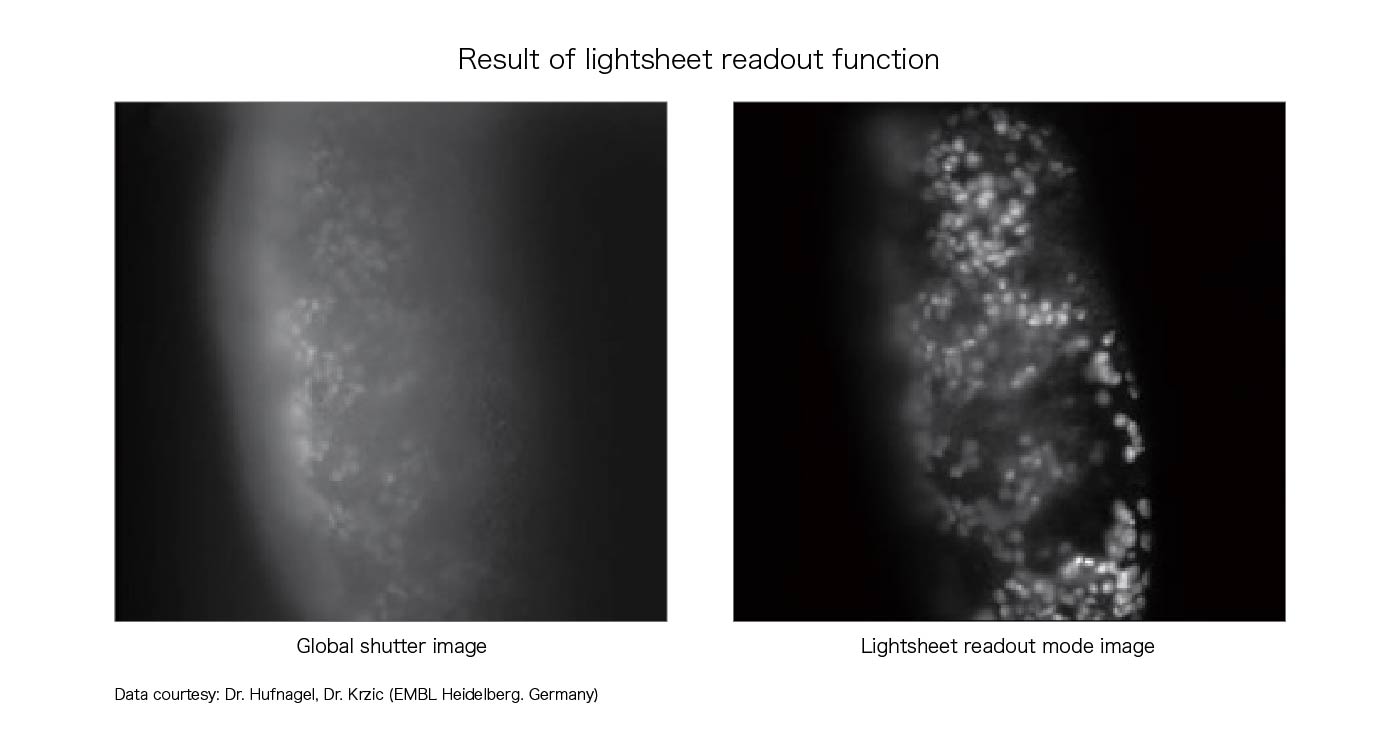
Lightsheet readout mode frame rates (frames/s)
| Readout Mode | Lightsheet Readout Mode | |||
|---|---|---|---|---|
| Scan Mode | Standard scan | |||
| X(pixels) | Y(pixels) | CoaXPress | USB3.1 Gen I (16 bit) |
USB3.1 Gen I (8 bit) |
| 4432 | 2368 | 114 | 15.7 | 31.5 |
| 4432 | 2304 | 117 | 16.2 | 32.4 |
| 4432 | 2048 | 132 | 18.2 | 36.5 |
| 4432 | 1024 | 263 | 36.4 | 72.8 |
| 4432 | 512 | 518 | 72.3 | 144 |
| 4432 | 256 | 1000 | 143 | 286 |
| 4432 | 128 | 1900 | 279 | 558 |
| 4432 | 8 | 11 400 | 2630 | 5260 |
| 4432 | 4 | 13 600 | 3690 | 7200 |
sCMOS lightsheet readout mode comparison
| Effective pixel numbers (H)×(V) | Readout speed (frames/s) | ||
|---|---|---|---|
ORCA-Fire (CoaXPress) |
ORCA-Fusion |
ORCA-Flash4.0 V3 |
|
| 4432 × 2368 | 114 | - | - |
| 2304 × 2304 | 117 | 88.9 | - |
| 2048 × 2048 | 132 | 100 | 49 |
| 1024 × 1024 | 263 | 199 | 99 |
| 512 × 512 | 518 | 396 | 196 |
| 256 × 256 | 1000 | 784 | 384 |
| 128 × 128 | 1900 | 1540 | 738 |
Interface: CoaXPress/Camera Link
Image capture mode: Internal synchronous mode
The ORCA-Fire, in lightsheet readout mode, delivers 2.5× more pixels per second that even the fastest low noise sCMOS camera.
Lightsheet : SYNCHRONIZE IN ANY DIRECTION
Bidirectional readout eliminates lag between frames
In the ORCA-Fire, lightsheet readout has four distinct operational modes: forward, backward, bidirectional and reverse bidirectional. In forward mode the readout begins at the top and progresses to the bottom of the sensor. In backwards mode, the readout is initiated from the bottom and ends at the top. Bidirectional mode begins with forward readout in the first frame and switches to backwards readout in the next frame, continuing this alternating pattern frame by frame. As the name suggests, backwards bidirectional mode, begins with the bottom to top backwards readout in the first frame and switches to top to bottom in the next and so on. Both bidirectional modes were implemented to avoid the lag time required to return to the lightsheet to the top or bottom of the sensor for the next frame.

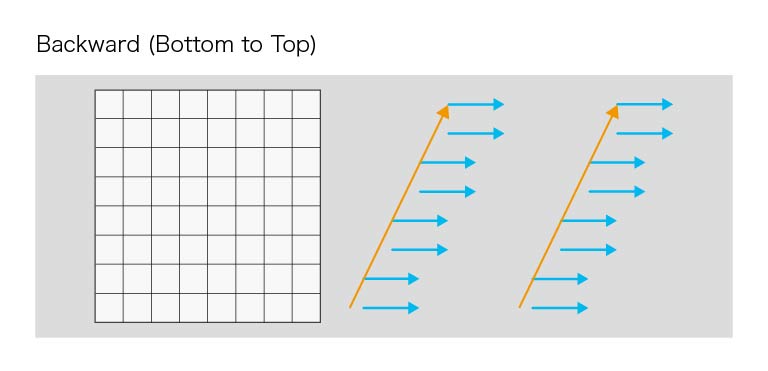
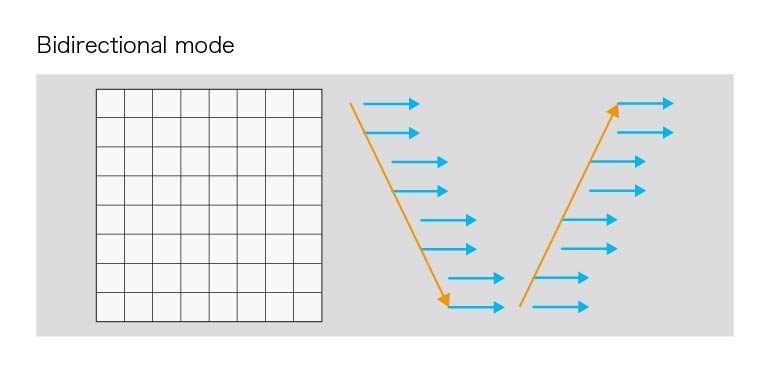
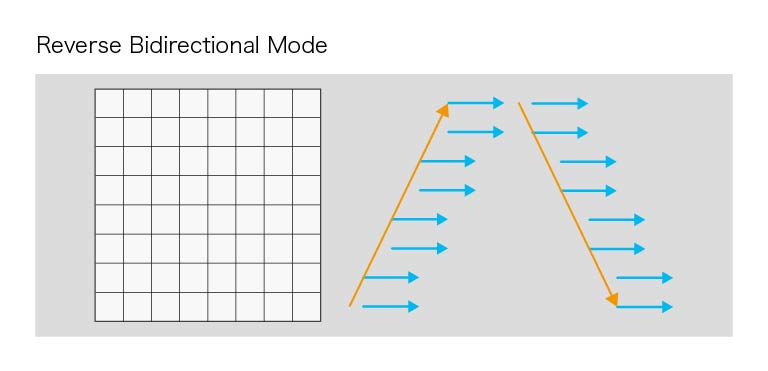
PC recommendations
With the introduction of the ORCA-Fire, users are now able to stream 10 megapixel images to their computers 115 frames per second. The computer recommendations for this high data rate can be met by using the guidelines listed in the PC Recommendations for ORCA-Fire.
Software
Our software provides the interface to access all our carefully engineered camera features, from simply setting exposure to orchestrating complex triggering for multidimensional experiments.
Specifications
| Product number | C16240-20UP |
|---|---|
| Imaging device | Scientific CMOS image sensor |
| Effective number of pixels | 4432 (H)×2368 (V) |
| Pixel size | 4.6 μm×4.6 μm |
| Effective area | 20.387 mm×10.892 mm |
| Full well capacity | 20 000 electrons (Typ.) |
| Readout speed*1 | Full resolution, CoaXPress : 115 frames/s Full resolution, USB 3.1 : 15.7 frames/s Vertical 4 line, CoaXPress : 19 500 frames/s Vertical 4 line, USB 3.1 : 3690 frames/s |
| Readout noise | 1.0 electrons (rms), 0.9 electrons (median) |
| Quantum efficiency | 86 % (peak QE) (Typ.) |
| Exposure time | 7.309 μs to 10 s (7.309 μs step) |
| Cooling method | Peltier cooling |
| Cooling temperature | Forced-air cooled (Ambient temperature: +25 °C) + 20 °C |
| Dark current | 0.6 electrons/pixel/s (Typ.) |
| Dynamic range*2 | 20 000 : 1 (rms) , 22 000 : 1 (median) |
| Sensor mode | Area readout , Lightsheet readout |
| External trigger function | Area readout mode : Edge trigger , Global reset edge trigger , Level trigger , Global reset level trigger , Sync readout trigger , Start trigger Lightsheet readout mode : Edge trigger , Start trigger |
| External trigger signal | External input (SMA) |
| External trigger level | TTL/3.3 V LVCMOS level |
| External trigger delay function | 0 μs to 10 s (1 μs step) |
| External output signal | Global exposure timing output , Any-row exposure timing output ,Trigger ready output , Programmable timing output High output , Low output |
| External output level | 3.3 V LVCMOS level |
| Interface | CoaXPress (Quad CXP-6) / USB 3.1 Gen 1 |
| A/D converter | 16 bit , 8 bit |
| Lens mount | C-mount |
| Power supply | AC 100 V to AC 240 V, 50 Hz/60 Hz, 2.5 A |
| Power consumption | 100 VA |
| Ambient operating temperature | 0 °C to +40 °C |
| Ambient storage temperature | -10 ℃ to +50 ℃ |
| Ambient operating humidity | 30 % to 80 % or less (With no condensation) |
| Ambient storage humidity | 90 % or less (With no condensation) |
※1 Using frame bundle function by DCAM-APIⓇ
※2 Calculated from the ratio of the full well capacity and the redout noise
Dimensions
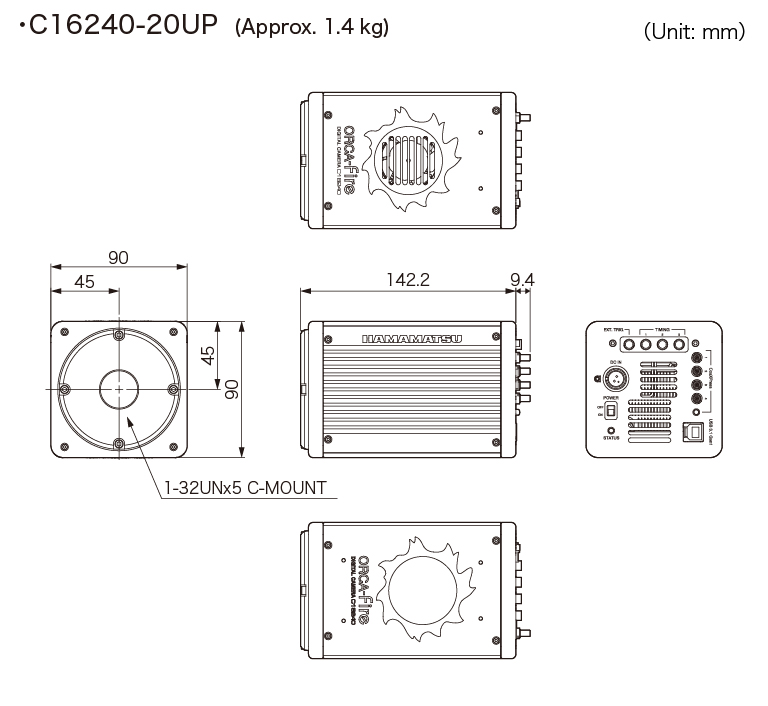
Instruction manual
- Confirmation
-
It looks like you're in the . If this is not your location, please select the correct region or country below.
You're headed to Hamamatsu Photonics website for GB (English). If you want to view an other country's site, the optimized information will be provided by selecting options below.
In order to use this website comfortably, we use cookies. For cookie details please see our cookie policy.
- Cookie Policy
-
This website or its third-party tools use cookies, which are necessary to its functioning and required to achieve the purposes illustrated in this cookie policy. By closing the cookie warning banner, scrolling the page, clicking a link or continuing to browse otherwise, you agree to the use of cookies.
Hamamatsu uses cookies in order to enhance your experience on our website and ensure that our website functions.
You can visit this page at any time to learn more about cookies, get the most up to date information on how we use cookies and manage your cookie settings. We will not use cookies for any purpose other than the ones stated, but please note that we reserve the right to update our cookies.
1. What are cookies?
For modern websites to work according to visitor’s expectations, they need to collect certain basic information about visitors. To do this, a site will create small text files which are placed on visitor’s devices (computer or mobile) - these files are known as cookies when you access a website. Cookies are used in order to make websites function and work efficiently. Cookies are uniquely assigned to each visitor and can only be read by a web server in the domain that issued the cookie to the visitor. Cookies cannot be used to run programs or deliver viruses to a visitor’s device.
Cookies do various jobs which make the visitor’s experience of the internet much smoother and more interactive. For instance, cookies are used to remember the visitor’s preferences on sites they visit often, to remember language preference and to help navigate between pages more efficiently. Much, though not all, of the data collected is anonymous, though some of it is designed to detect browsing patterns and approximate geographical location to improve the visitor experience.
Certain type of cookies may require the data subject’s consent before storing them on the computer.
2. What are the different types of cookies?
This website uses two types of cookies:
- First party cookies. For our website, the first party cookies are controlled and maintained by Hamamatsu. No other parties have access to these cookies.
- Third party cookies. These cookies are implemented by organizations outside Hamamatsu. We do not have access to the data in these cookies, but we use these cookies to improve the overall website experience.
3. How do we use cookies?
This website uses cookies for following purposes:
- Certain cookies are necessary for our website to function. These are strictly necessary cookies and are required to enable website access, support navigation or provide relevant content. These cookies direct you to the correct region or country, and support security and ecommerce. Strictly necessary cookies also enforce your privacy preferences. Without these strictly necessary cookies, much of our website will not function.
- Analytics cookies are used to track website usage. This data enables us to improve our website usability, performance and website administration. In our analytics cookies, we do not store any personal identifying information.
- Functionality cookies. These are used to recognize you when you return to our website. This enables us to personalize our content for you, greet you by name and remember your preferences (for example, your choice of language or region).
- These cookies record your visit to our website, the pages you have visited and the links you have followed. We will use this information to make our website and the advertising displayed on it more relevant to your interests. We may also share this information with third parties for this purpose.
Cookies help us help you. Through the use of cookies, we learn what is important to our visitors and we develop and enhance website content and functionality to support your experience. Much of our website can be accessed if cookies are disabled, however certain website functions may not work. And, we believe your current and future visits will be enhanced if cookies are enabled.
4. Which cookies do we use?
There are two ways to manage cookie preferences.
- You can set your cookie preferences on your device or in your browser.
- You can set your cookie preferences at the website level.
If you don’t want to receive cookies, you can modify your browser so that it notifies you when cookies are sent to it or you can refuse cookies altogether. You can also delete cookies that have already been set.
If you wish to restrict or block web browser cookies which are set on your device then you can do this through your browser settings; the Help function within your browser should tell you how. Alternatively, you may wish to visit www.aboutcookies.org, which contains comprehensive information on how to do this on a wide variety of desktop browsers.
5. What are Internet tags and how do we use them with cookies?
Occasionally, we may use internet tags (also known as action tags, single-pixel GIFs, clear GIFs, invisible GIFs and 1-by-1 GIFs) at this site and may deploy these tags/cookies through a third-party advertising partner or a web analytical service partner which may be located and store the respective information (including your IP-address) in a foreign country. These tags/cookies are placed on both online advertisements that bring users to this site and on different pages of this site. We use this technology to measure the visitors' responses to our sites and the effectiveness of our advertising campaigns (including how many times a page is opened and which information is consulted) as well as to evaluate your use of this website. The third-party partner or the web analytical service partner may be able to collect data about visitors to our and other sites because of these internet tags/cookies, may compose reports regarding the website’s activity for us and may provide further services which are related to the use of the website and the internet. They may provide such information to other parties if there is a legal requirement that they do so, or if they hire the other parties to process information on their behalf.
If you would like more information about web tags and cookies associated with on-line advertising or to opt-out of third-party collection of this information, please visit the Network Advertising Initiative website http://www.networkadvertising.org.
6. Analytics and Advertisement Cookies
We use third-party cookies (such as Google Analytics) to track visitors on our website, to get reports about how visitors use the website and to inform, optimize and serve ads based on someone's past visits to our website.
You may opt-out of Google Analytics cookies by the websites provided by Google:
https://tools.google.com/dlpage/gaoptout?hl=en
As provided in this Privacy Policy (Article 5), you can learn more about opt-out cookies by the website provided by Network Advertising Initiative:
http://www.networkadvertising.org
We inform you that in such case you will not be able to wholly use all functions of our website.
Close
